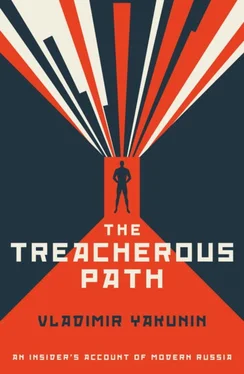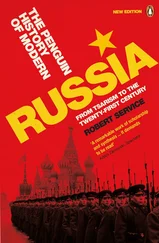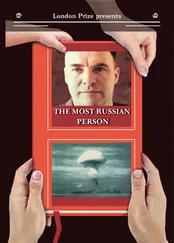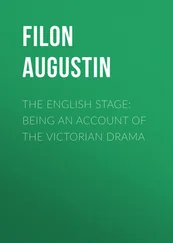Around that time, I became acquainted with Dmitry Shakhanov, a bright young officer who was the deputy head of a special police division dedicated to fighting organised crime. In the normal course of his work, he detained a number of crooks who happened to have close links with a senior St Petersburg official. The official was incandescent. He demanded that his friends should be released, and when Shakhanov refused to comply, the official resolved instead to destroy his career. Within two, at most three, months, Shakhanov had been fired from the police on entirely spurious charges, and the official was not finished there; it was clear that he would not stop until he had ensured that the only job Shakhanov would ever be able to do again would be one cleaning the streets. Instead, I invited him to work for me at the Directorate. I knew it would do nothing for my popularity with the official, but I knew too that because I was absolutely independent from the local authorities, there was nothing he could say or do to prevent me. Still, to see how the lowest elements of society had embroidered themselves into the fabric of government, where they could operate with impunity, left a sour taste in my mouth.
And their days are not done yet. A couple of years ago I received an email, sent, I suppose, from hell. It seemed to be an unsettling coda to a case that I had been involved with in St Petersburg in which I had helped put a notorious criminal behind bars: a man who I knew had long since breathed his last. ‘You, bloody Vladimir Yakunin,’ it read, ‘you cracked the life of an honourable person, you will pay for this.’ I still do not know who sent it.
Sometimes, the most serious crimes occurred where no blood was spilled. We were called to investigate activity at the Baltic Shipyard, which at that time was engaged in building the cruiser Peter the Great . The construction process, which had begun almost a decade previously, had been long and complex, but now, for reasons that were not immediately clear, it had shuddered to a halt. We began to make a forensic study of their records, and the further in we got, the more obvious it became that if construction was not completed then a criminal investigation would have to be initiated to discover what had gone wrong.
As the head of the Directorate, I had the authority to send letters to any federal service or territory throughout the north-west. We could demand to see representatives of whomever we were investigating, and could call on the support of the Ministry of Internal Affairs and the tax office, but, ultimately, there were limits to our authority. Because we were not a law enforcement office, we had no other powers of compulsion, so all we could do was dig into the situation as deeply as we were able and then provide the documents to the administration and the President. The problem was that 50 million roubles were needed to finish the work on this state-of-the-art ship. If it stayed another month in the shipyard, then all its major systems would go beyond their guarantees and it would have to be completely renovated and reconstructed. Ten years of work, ten years of enormous investment, would be compromised all because of the mendacity of a handful of criminals.
I wrote a letter to our Moscow headquarters asking President Yeltsin to provide 50 million roubles from his special Reserve Fund to finish the ship, which he duly supplied. So, in a sense, the episode was resolved in a relatively straightforward fashion, but to me it spoke so loudly about the way that the country had become almost unrecognisable in only a matter of years. That this ship could have been subject to the predations of these vultures, that people had become so oblivious to the pressing demands of our national security, and inured to a consideration of national pride, showed me that something had been lost since the fall of the Soviet Union. I did not like the chaos and cynicism that had rushed in to fill the void it had left.
I have heard it said that without access to the Baltic ports, Russia would disappear into the frost, the deep night, the snow and the ice. You do not need to compete with Russia in an arms race; it is enough just to deprive her of her ports. It was with this principle in mind that the port of St Petersburg, which was to give Russia access to the Baltic trade routes, was originally constructed. It was an ambition with a history almost as old as Russia itself. During the reign of Ivan the Third, the Hanseatic League explored the possibility of building ports along the south coast of the Gulf of Finland, and a few centuries later Peter the Great’s determination to build the country’s principal port here was frustrated only by the region’s shallow waters. However, after the Great Patriotic War, once Estonia and Latvia were absorbed into the Soviet Union, more than a trillion dollars was invested into building the transport infrastructure of the Baltic republics instead, notably two of what were at the time among the most modern ports in the world: Tallinn in Estonia and Ventspils in Latvia. When these vital assets fell into the hands of the new independent republics, Russia was in danger once more of being condemned to a reliance on the transport infrastructure of another nation. Only then did the dangers inherent in a policy of prioritising the development of Ventspils and Tallinn become apparent. [8] At the infamous December 1991 meeting at the CPSU Central Committee’s dacha deep in the forest of Belovezhskaya Pushcha in Belarus at which the dissolution of the Soviet Union was made official, Sobchak told Yeltsin that if he was going to sign the agreement – already by this point three of the Baltic republics had seceded unilaterally – then he should also ensure that he sat down with the leaders of the newly independent countries and discuss exactly what territory should be assigned to which nation, and also the terms that would apply for Russia’s continued use of strategic assets such as the Baltic ports. This never happened. (Though the responsibility was not Yeltsin’s alone – those men who had taken control of the nascent republics of, for instance, Latvia and Estonia avoided this important discussion.)
At a stroke, the country had lost its access to world markets and severely hampered its prospects of economic development. It had other ports, but they were concentrated in remote locations and were either ice-bound for large stretches of the year or given over to military use. There was a decent port at St Petersburg, but it only possessed a relatively shallow channel (the direct result of a decision taken in the ’70s to privilege the modernisation of the Baltic ports), and could not support visits from high-tonnage ships. The loss of Russia’s delivery channels was all the more severe at a time when its economy’s growth was fuelled by raw materials such as coal and fertilisers that in the main had to be transported via seaports. There was also an agonising emotional shock, especially for those who, like me, had personal connections to the Baltic states. I had spent the first fourteen years of my life in Estonia. When I was growing up, the idea that this bond might be severed would have been inconceivable. And what made it sadder was that, following independence, an ugly brand of nationalism had emerged in each of these countries. Bruised by this surge of unprecedented rancour, we learned a new lesson: politics is not aesthetic – it tramples over people’s feelings and does not care how it looks as long as it achieves its aims.
In 1993, Boris Yeltsin issued a presidential decree stating that a port should be built at Ust-Luga, a fishing village that perched beside the Gulf of Finland (it was one of several locations earmarked for development as ports, including Primorsk, Vyborg and Vysotsk, among others). The immediate priority was to support the Russian coal industry (though the terminals were expected to be able to handle other cargo too, such as oil, chemical goods and containers), but the wider geo-political implications were obvious. When 80 per cent of Russia’s vital exports – and thus a huge proportion of the nation’s GDP – went through the Baltic ports, it simply could not afford to be dependent on the goodwill of a third party to be able to ship its products abroad; this project would help to begin rebuilding the infrastructure of a country that had had many of its strategic assets amputated overnight. [9] In addition to establishing Ust-Luga as a significant entrepôt for exports, we would later be charged with the development of a ferry route that would provide a stable connection between mainland Russia and the exclave of Kaliningrad, the home of our Baltic Fleet. There is no way of approaching Kaliningrad by land that would not involve crossing 300km of the territory of at least two other nations – Lithuania and Poland are its immediate neighbours, with Latvia, Belarus and Ukraine forming a belt around them. Because the exclave’s residents live under the constant threat of isolation, the quality of its sea connections is thus paramount. The gravity of this situation was underlined in 2001 when the Lithuanian government revoked the overflight rights of the region’s sole carrier, Kaliningrad Air, which could afford to neither pay the fees it owed to Lithuania’s air-traffic control organisation, nor modernise its fleet to comply with EU safety standards. If the region were cut off, for whatever reason, it would not only have a substantial personal and economic impact, but there would also be severe consequences for its security. How else, other than by ferry, would we be able to transport men and munitions to defend our territory? No purely commercial entity was ever likely to be persuaded to take this project on – its value lay in its strategic importance. There was never any suggestion it would be a money-spinner, and so, following the initial instructions from the president, the service began running in 2006.
Читать дальше












